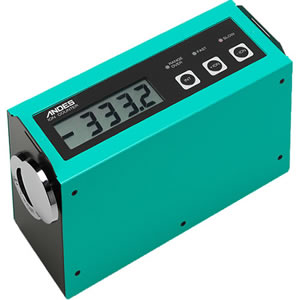How to Choose the Best Air Ion Counter |
 |
 |
   Types of ion counters and applications  Dual cylindrical detector (conforming to the JIS standard)
Applications
The accurately adjusted electronic impedance of the detector, precise flow control and high noise immunity make accurate measurement possible. Some counters can measure down to 1(pcs/cc).  While these counters used to cost as much as 5,000-10,000USD, you can now find some models priced at below 1,000USD. Reliable ion measurement data, which is provided by a counter conforming to the JIS standard, will help you to convince your customers. We recommend an ion counter which uses a dual cylindrical detector if your budget allows.  Parallel flat plate detector
Applications
 As far as we know, these counters found in the market are not good for low concentration ion measurement of 0-1000(pcs/cc) +/-. We think this is because the measurement principle is different from that of the Gerdien method and the accuracy of the electronic impedance of the detector, flow control and noise immunity are not much taken into account.   For ores
Applications
It uses the principle that the air is ionized when radiation is released. The GM tube measures an amount of radiation and then the amount of negative ions can be calculated according to a conversion formula. It does not measure the amount of electric charge which ions possess but it measures the amount of radiation and converts it into the ion count according to a formula created by the manufacturer of the ion counter. Unlike an ion counter using a dual cylindrical or parallel flat plate detector, a counter for ores does not suck the air. Thus, it provides stable measurement as the measurement is not affected by air flow. It is good for product promotion in front of customers.    An ion counter for ores cannot measure ions when radiation is not released. It cannot measure ions of specific mobilities, either.  PC connectable
Applications
You can print out the data. It is convenient to make out a report. Some models allow you to control remotely from your PC.    Positive/Negative ion simultaneous measurement
Applications
 Positive/Negative ion simultaneous measurement ion counter (Dual cylindrical detector)
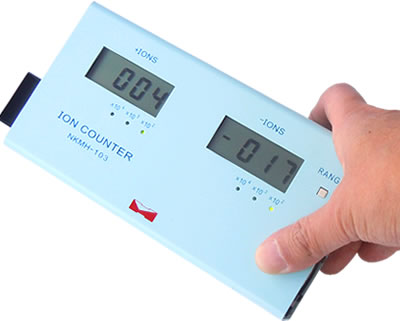  Ion detector
Applications
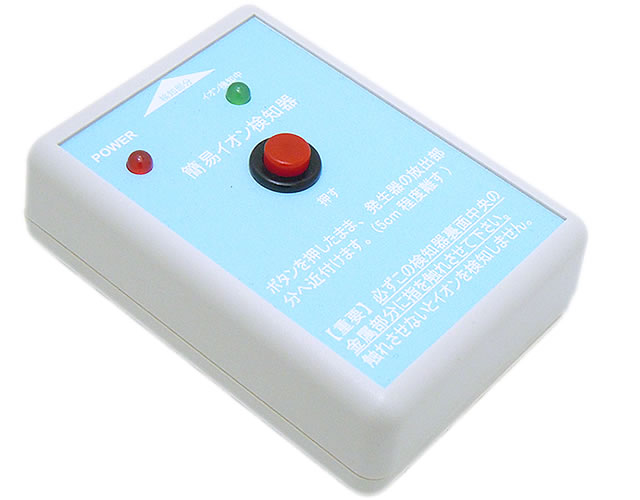 Ion detector
Ion detectors are affordable but they are not designed to measure accurate ion counts. This is because ion counters are generally designed to detect small ions (1) but ion detectors detect all ions including small/large ions and even large electrically charged particles and static electricity. Most of ion detectors cannot detect a small amount of ions. Thus, you cannot measure accurate ion counts at a certain distance away from the ion source. Ion detectors can only be used for test operation of ion generators which release a massive amount of negative ions and ion hair dryers. (1) We think ion counters are generally designed to detect small ions because these ions are said to have better effects on the human body.   Best ion counter for the application  Ions emitted by ores An ion counter for ores provides stable measurement and clear readings
If you measure ions generated by ores only, an ion counter for ores will be good. It provides stable measurement because the measurement is not affected by air flow.
Most of ion counters for ores display the average ion count within a certain time frame instead of ion count fluctuation. One time measurement provides one value. It is simple and clear.  An ion counter for ores displays the average ion count within a certain time frame
An ion counter using a dual cylindrical or parallel flat plate detector is an option but you may wonder which value is the correct ion count.
If you measure ions generated by ores and those generated by others, an ion counter using a dual cylindrical or parallel flat plate detector is an option.
Unlike an ion counter for ores, the reading changes incessantly. It is possible that you may wonder which value is the correct ion count.
If you show ion data to your customers, an ion counter for ores will be a better option as it provides one value only. An ion counter using a dual cylindrical or parallel flat plate detector may be unable to detect ions when the amount of radiation is too small.  An ion counter using a dual cylindrical or parallel flat plate detector displays the ion count which changes incessantly.
 Accurate indoor measurement
An ion counter using a dual cylindrical detector is good for this application because the ion count is normally at most 300(pcs/cc) in a room.
This type of counter is also called an ion counter conforming to the JIS standard.
The widely used method to measure air ions is used. It provides accurate measurement when the ion density is low.
 A detector has to detect a small amount of electrical charge to conduct low density ion measurement. The measurement can be affected by accuracy of the detector and noise immunity. Most of ion counters using this type of detector are designed in consideration of these factors.  Ions generated by ion generators or hair dryers
3,000,000(pcs/cc)+ ions can be detected at the blow off points of ion generators and ion hair dryers.
You need to choose an ion counter which can measure a massive amount of ions.
A wide range ion counter using a parallel flat plate detector will be good as highly accurate measurement is not required.
It may be a good idea to get an ion counter using a dual cylindrical detector for accurate low concentration ion measurement. This is because the ion count dramatically decreases as you go further away from the generator/dryer. 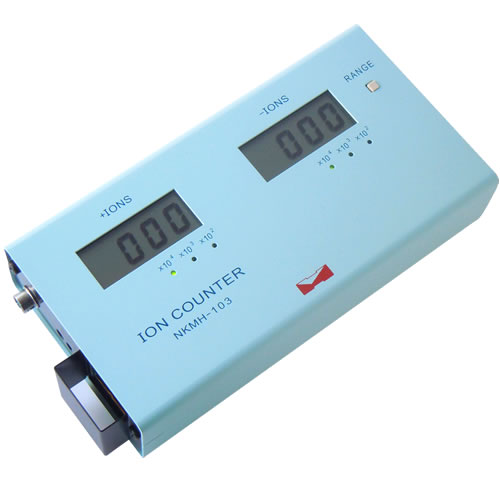 Wide range ion counter for a massive amount of ions
 Ions generated by mist
You need to consider the operating condition of an ion counter because the humidity is very high when the air is misty.
Internal condensation can cause failure or malfunction of the device because the counter sucks the air into the detector.
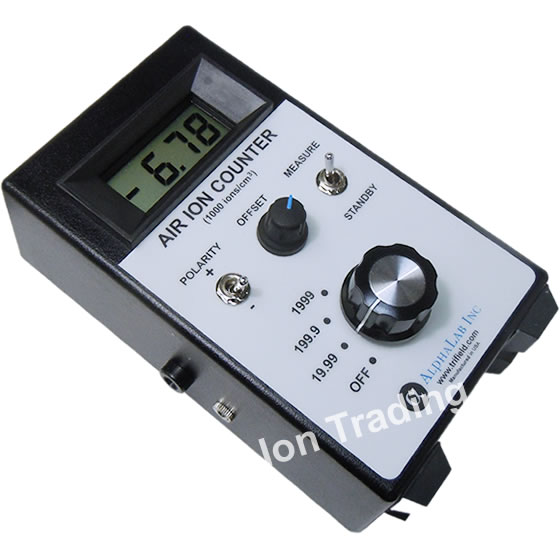  Ions generated by tourmaline
Tourmaline generates very little amount of negative ions with no external force.
Thus, the ion count is very low if you measure ions released from fabric even if tourmaline is woven into it.
The ion count rises if you rub the fabric as external force is applied.
You need to understand this characteristic before you purchase an ion counter, otherwise you may end up no ion detection. Reference: Tourmaline & Negative ion
 Save/Output ion measurement data
A PC connectable ion counter enables you to save ion measurement data and print out the data in waveform.
You can make out a convincing report as the data shown in graph form will help you to get a whole picture of the measurement.


|
 |
||||||||||||||||
 |
||||||||||||||||||

|
|
 |
 |

|
Ion Trading
Universal Plan Co., Ltd.
107 Tachikawa-Lumiere, 3-5-1, Ichiban-cho, Tachikawa-city, Tokyo, 190-0033, Japan
Phone: +81-42-848-5311 Fax: +81-42-848-5148
|
| Copyright (C) Universal Plan Co., Ltd. 1993-2024 Japanese Corporate Number: 1012802002452 (National Tax Agency Japan) |



